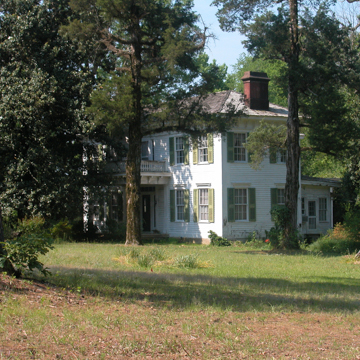John B. McDaniel came from South Carolina to homestead land a few miles west of Arkadelphia. When he was ready to construct this house for himself and his wife, Mary Ann, he brought in Griffin, builder of a Greek Revival dwelling he had seen in South Carolina, instructing him to create something similar. Bricks for the foundations and chimneys of the two-story, twelve-room wooden house were made from clay from the acreage. In plan, the house has a central hall, and a double-landing staircase leads to the second floor. The dining room was at the rear of the house and connected by a walkway to the detached kitchen, a precautionary measure against fire. In a later modernization of the interior, the kitchen was relocated to the interior of house.
Although not recorded, McDaniel must also have brought an experienced enslaved labor force with him to establish his cotton plantation, even before the house was built. Later occupants of the property discovered foundations of at least six slave dwellings surrounding McDaniel’s house on the twelve acres remaining of the original plantation. The most substantial building near the main house was the detached kitchen. More than six wells survive, along with still productive springs. When on a Ouachita River trip to New Orleans, McDaniel brought back two magnolia seedlings that he planted on each side of the main entrance, thus providing the house with its name; only one magnolia survives. A cotton gin stood to the north of the house. By 1971, the estate was completely overgrown, but subsequent owners have restored the house. During that process, they found a small family cemetery on the property, which was a burial site for slaves. The nine tombstones were restored to their original position. In 1984 ownership of Magnolia Manor was transferred to the Ross Foundation, and in 2000 the foundation gave the house and estate to Henderson State University.


